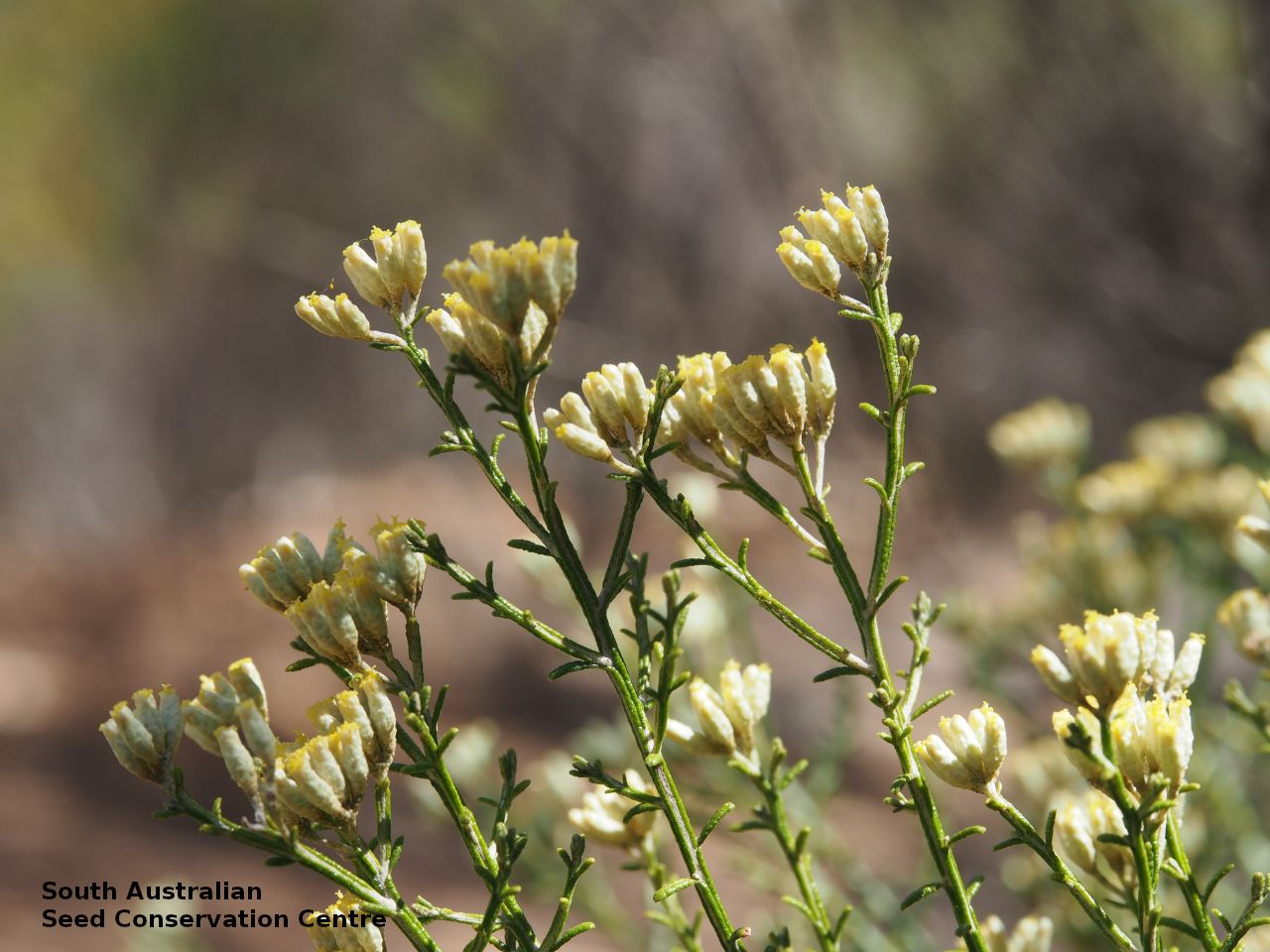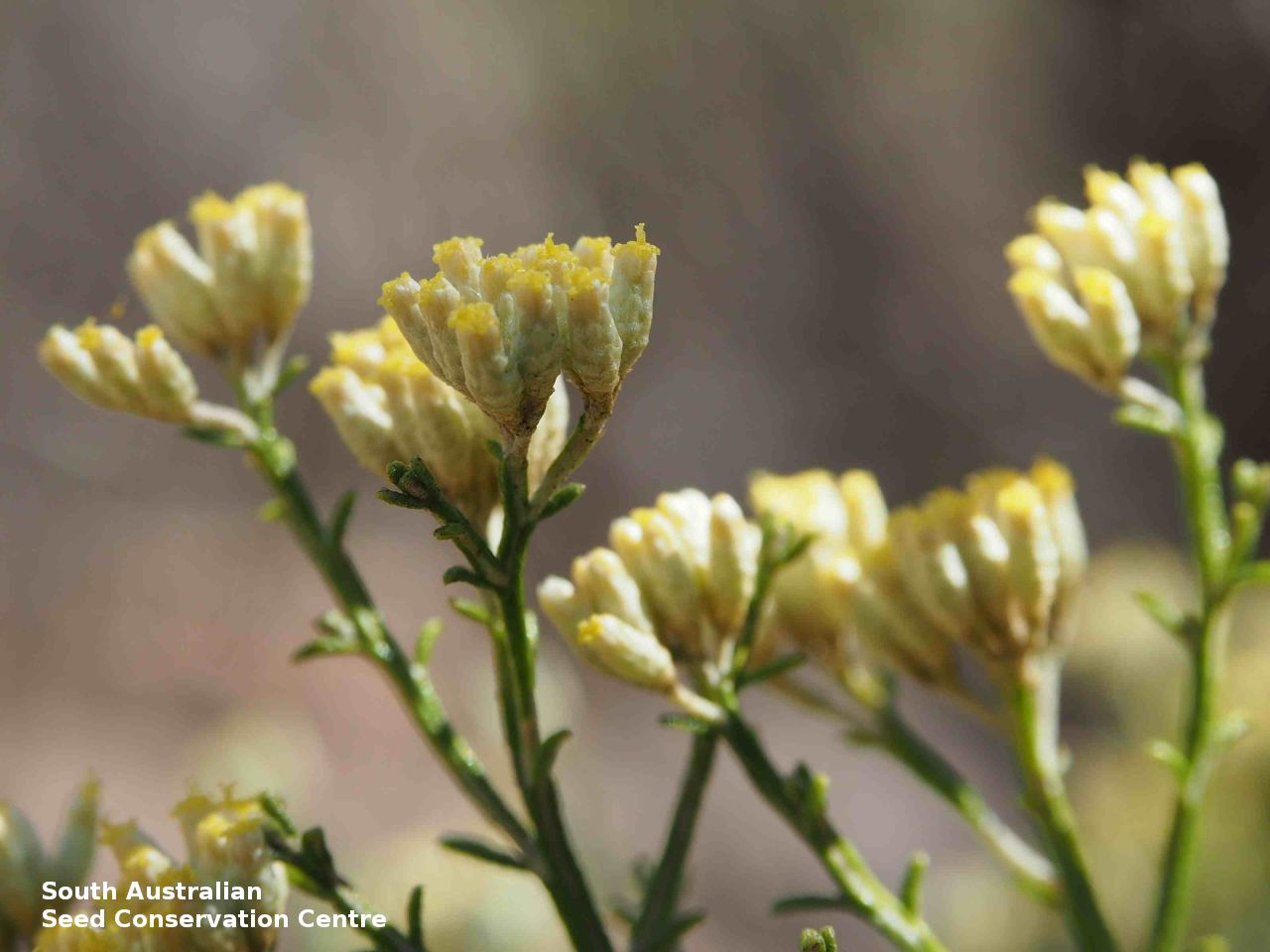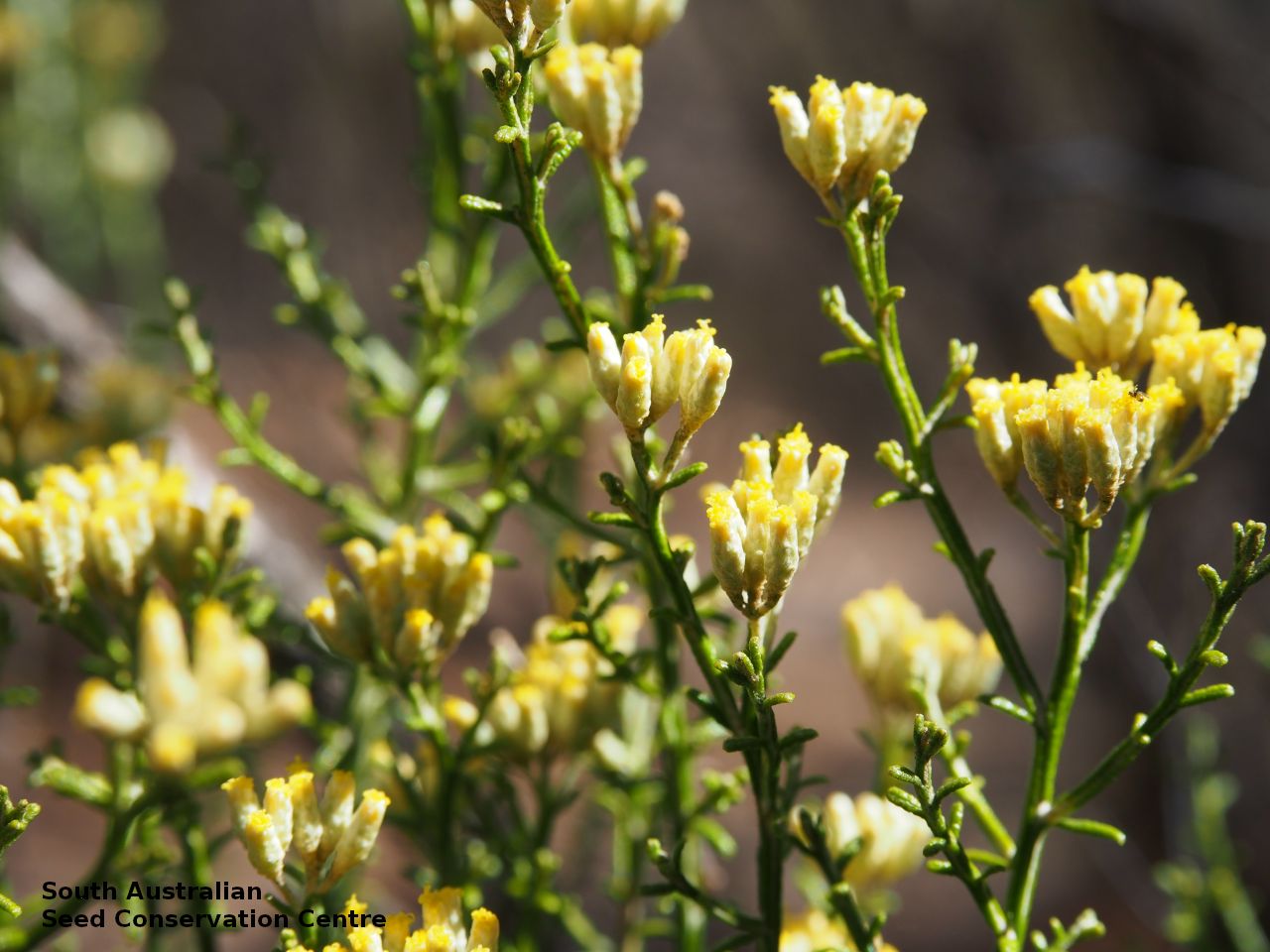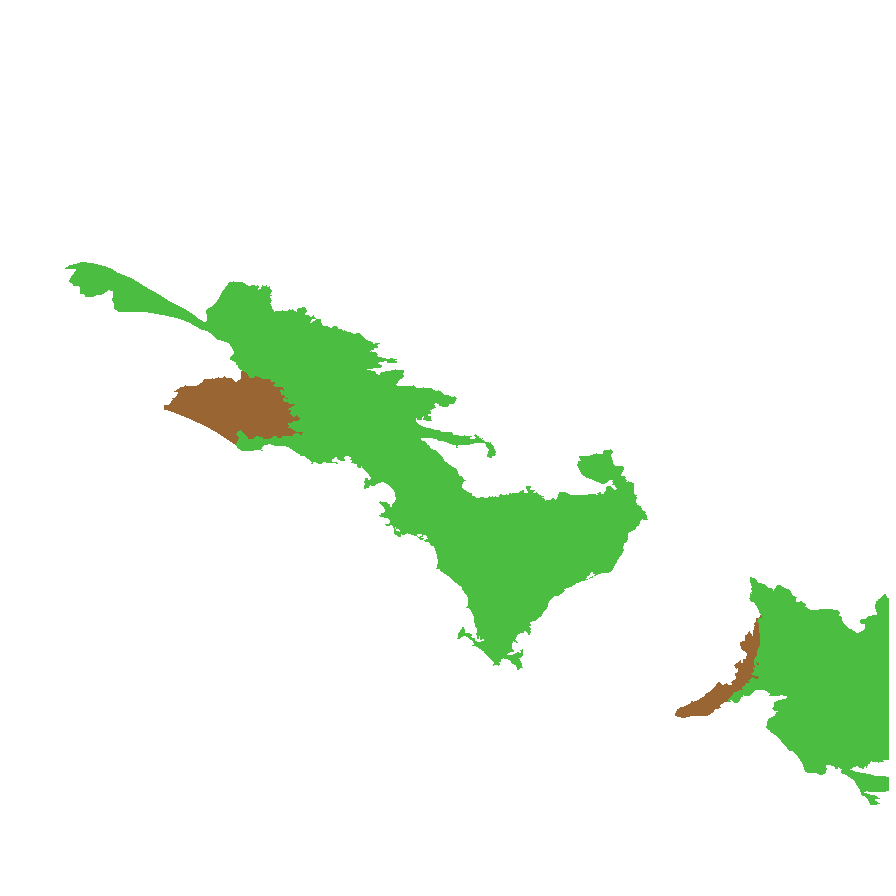





Botanical art
Prior names
Helichrysum catadromum
Helichrysum decurrens
Ozothamnus catadromus
Common names
Ridged Bush-everlasting
Ridged Everlasting
Etymology
Ozothamnus, from the Greek 'ozo', meaning to smell and 'thamnos, meaning shrub, alluding to the fragrant foliage when crushed. Decurrens, meaning having the base of the stalk extending down the stem as two raised lines or wings.
Distribution and status
Found on Eyre Peninsula and the mid Murray region in South Australia growing in mallee communities on loamier soils of flats and dune swales, also on rocky outcrops. Also found in Victoria. Native. Common in South Australia. Uncommon in Victoria.
Herbarium regions: Eyre Peninsula, Murray, South Eastern
NRM regions: Eyre Peninsula, South Australian Murray-Darling Basin, South East
AVH map: SA distribution map (external link)
Plant description
Spreading shrub to 0.5 m high, with branchlets covered in dense cottony hairs. Leaves spreading, sessile, linear, to 8 mm long and 1 mm wide; glabrous and scabrous above, densely cottony and glandular beneath; apex rounded; base decurrent into 2 prominent green, glabrous ridges; margins revolute. Inflorescences, hemispherical to 2.5 cm diameter, with creamish-yellow flowers. Flowering between December and January. Fruits are small cream-brown heads. Seed embryo type is spatulate, fully-developed.
Seed collection and propagation
Collect seeds between February and March. Collect mature seed heads turning a cream-brown. Place the heads in a tray and leave to dry for 1-2 weeks, then rub the heads gently with your hands to dislodge the seeds. Use a sieve to separate the unwanted material. Store the seeds with a desiccant such as dried silica beads or dry rice, in an air tight container in a cool and dry place.